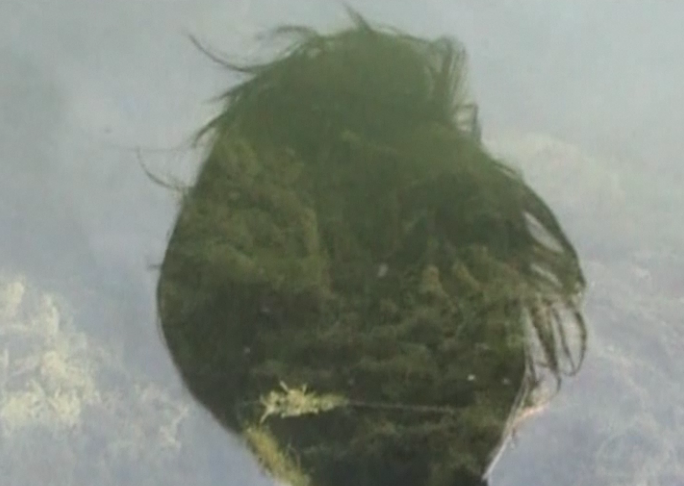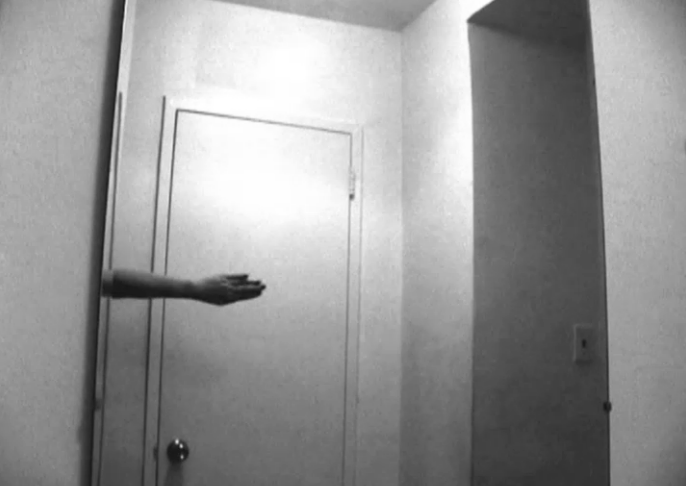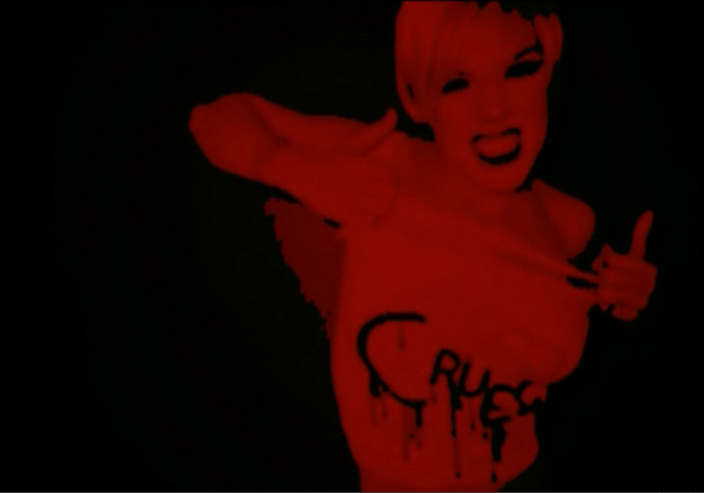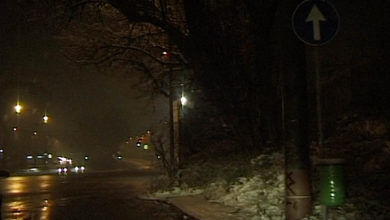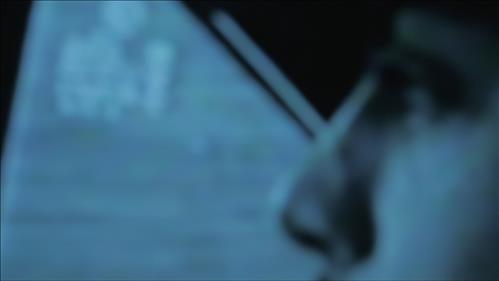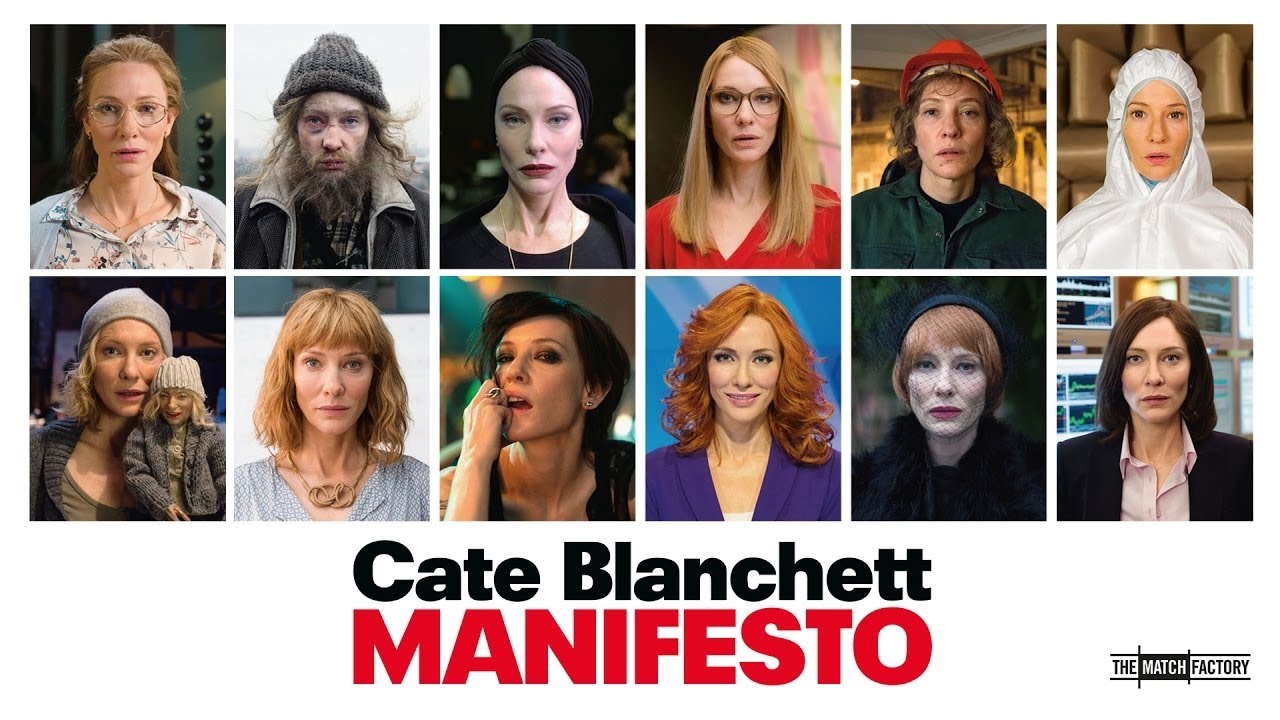Evelin Stermitz (born 1972 in Austria) works with media and new media art using photography, video and net, including installations and conceptual works. After having completed a Master’s degree in Philosophy on the thesis Imagoes of Dancing Women in Film (University Klagenfurt, Austria), she studied Art and Visual Communication at the Academy of Fine Arts and Design (University of Ljubljana, Slovenia).
The focus of her art projects is on gender based female and socio-cultural topics. An important task of her works deals with the female body and the outgoing connection to created symbolic meanings of gender in history and nowadays; with a main emphasis on performative works.
In 2008, Evelin Stermitz founded the ArtFem.TV project, a non-profit artist run ITV and media art portal about Art and Feminism. The aim of the project is to foster Women in the Arts, their art works and projects, creating an international online television screen for the creativity, images and voices of Women. The ongoing online video platform displays more than 500 video pieces by about 100 international women artists.
www.evelinstermitz.net
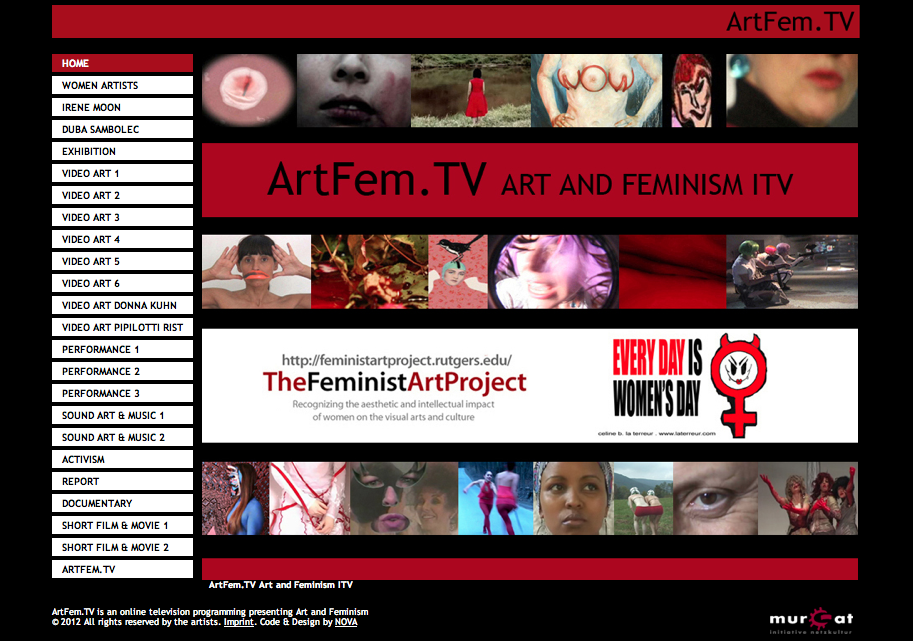
Lucia Aspesi: Let’s starts our interview by presenting the ArtFem.TV‘s project and the reasons that brought you to its creation.
Evelin Stermitz: I founded ArtFem.TV because I was interested in art and feminist issues in video art. Somehow I felt that I was the only one dealing with this issue, so I intended to see how other women artists are working in this field and created an open portal to connect to each other’s experiences. I intended to create a net portal to support women artists, also with the aim to encourage other women to create more works instead of feeling being alone in their artistic practice.
L. A.: ArtFem.TV is a huge project that runs since about 4 years. I guess your work deals also with the understanding of its evolvement in time and the influence of external contributions. But I am very interested in knowing more about how you selected the videos at the first stage?
E. St.: When I began to work on ArtFem.TV, I made a public call on a net list entitled Faces Gender Art Technology and asked women artists if they would like to present their video pieces on my web project. I got very good responses and posted the public call also on other artist’s net lists and associations. Then I also did my own research about finding women artists working within art and feminist issues. Since the web project became widely spread during the years, sometimes women artists are also contacting me and asking if I would like to include their pieces at ArtFem.TV. So, I am really glad that other women artists like the project and that people can benefit from the sources.
L. A.: Is the website ArtFem.TV connected to other public events, such as presentations, screenings, or exhibitions?
E. St.: Yes, I curated video art exhibitions out from this platform, I did screenings and presented a monthly cinema program at Cinema Udarnik, in Slovenia (2010 – 2012 Cinéma Féministe, in collaboration with son:DA and Zavod Udarnik). That happened because I intended to link the video art pieces from the online virtual context to the reality site again, to connect the video and film works with the “real” public again and off cyberspace. But ArtFem.TV works also as a resource for other numerous initiatives, curators are looking up the website and lecturers decide to use the material for educational purposes in women studies and art education, for example. Within the few years it became a very interesting project where the public has the possibility to receive and perceive the video material which is otherwise not so easy to find on the Internet at one single URL. The project also received a Honorary Mention at the IX Festival Internacional de la Imagen, VI Muestra Monografica de Media Art, organized by the Departamento de Diseno Visual de la Universidad de Caldas in the year 2010 and has been exhibited as an online installation at the CCC Centro Cultural y de Convenciones Teatro los Fundadores, Manizales, Colombia. I also spoke about the project at various conferences and ArtFem.TV has been included in other exhibitions, too.
L. A.: Surfing on the ArtFem.TV‘s pages, the gaze you used for the selection of the works is very much transversely: there are video works by Martha Rosler, Pipilotti Rist, and the Guerrilla Girls.
E. St.: Yes, there are many international women artists represented with their works from different generations. Women artists from the 1970s, the pioneers of video art, were very engaged to support the project and gave their permission to show their video art pieces on ArtFem.TV. Also Pipilotti Rist was very supportive and encouraging, and it is a great honor for me to represent all these wonderful artists through ArtFem.TV.
L. A.: On Saturday the 10th November, you will give a lecture about Video Art and WoManWoMan in the frame of INVIDEO 2012 (Milan, Italy). At the core of the talk there is a discussion of the role of video art in the feminist art movement from the 1960/70s till nowadays. Your work takes shape directly from the history of a movement that still has to be investigated in deep and struggles for spaces of visibility. I would like to understand how your research comes in nowadays with the form of an online database.
E. St.: The historical context that I investigate begins within the second wave of feminism. Beginning in the late 1960’s and 1970’s many women artists used video for their artistic expression because it did not possess a male tradition of art. Being a new artistic media, women artists approached and explored it for their own purposes. Today within third wave feminism, it is interesting to see how video art changed during the time, but also we have to take in account that it became a global issue and technology changed the production. In the last decades, with the Digital Revolution, the Internet became a wonderful media for video and art. In my research I intend to highlight the point to provide access in a democratic way to the feminist discourse in the arts. I think this is very important because sometimes media and art still suppresses women. Still a lot of things have to be done and I would love to do more research on this agenda, but I don’t work with assistants, don’t have funding and budget to expand the ArtFem.TV‘s project. But this independence also offers a lot of freedom for the artistic interrogation and investigation. And I am also myself an artist and this project eats up a lot of time from my own production, too, but well, that’s an artist’s life.
L. A.: One great aspect of ArtFem.TV is that it evolves also by itself, through the visitors for example.
E. St.: Yes, but we need more non-profit initiatives and larger structures of collaboration. In times of crisis like we are now, studies on art, gender, and women issues are the first disciplines that have budget cuts at Universities and research centers. Although the funding of women’s agenda has never been very powerful before the crisis, too. We also need to consider that women predominantly intend to do non-profit work, what men mainly would not choose to do. But since I see ArtFem.TV as an art project too, I can take this into account.
L. A.: The occasion like your lecture at INVIDEO are precious moments for debates about feminism and video art currently happening in Italy. As you were mentioning before, ArtFem.TV is one part of your work. Parallel to it you are pursuing an artistic devotion to the moving image, specifically in video by creating also video installations using both single and multi-channel projections.
E. St.: This aspect is a historic aim of video art – to expand the traditional cinema and television of its image perception. To have the possibility to work on different video channels means that the picture can be enlarged, expanding the forms of perception of images and involving the audience into the image through forms of video installation.
Water Portrait II, Evelin Stermitz
L. A.: When you upload a video on the website the experience changes again. Personally I experienced your work only through the Internet, and while watching Water Portrait I-IV (2010), for example, I was thinking how it could look installed on real site, and how the four videos where interacting between each other.
E. St.: These video series faces women’s portraits of images mirroring from the water surface, filmed at the Ljubljanica river in Ljubljana, Slovenia. These portraits reveal experiences of violence against women dedicated to the water. Originally I thought about installing them all in one room or place. All the videos have the same duration of 2 Min. 6 Sec., but are meant to be each randomly played on a single monitor or projection, to alternate moments of water silence with the narration of women testimonies. It is a video and sound collage installation at the same time, aimed to create a single room of floating water and sound.
L. A.: In what concern did you create the portraits, how was the process of creation and your relationship with the portrayed women?
E. St.: The intention of creating the video series, was that almost NO ONE SPEAKS OUT LOUD about violence against women in our society and public discourse. It is mentioned at side ways of women’s portraits in narrative or at groups of non-profit organizations. The taped portraits video were not so easy to capture, because it took me a long time to find women who liked to reveal their statements. It took me one year to complete the video series. First I contacted two associations working against violence on women based in Ljubljana to find women who would like to collaborate with me for the project, but NO woman wanted to talk about their abuse because they felt ashamed and deprived of their dignity. Only after a while ONE WOMAN agreed to work with me. It was not the first time she was speaking about her abuse, in fact she had already wrote an essay about her story and she understood art projects. The other women who participated in this project I found within my own art and friends circle.
Into the Mirror, Evelin Stermitz
L. A.: Another video which works on the reference with space and evoking new places is the single channel video Into the Mirror.
E. St.: Made in 2011, Into the Mirror is inspired by Alice’s door and the encounter with a different world when entering through an imaginative door. The door in the mirror seems to be hazardous, awkward, a mystery, and a miracle at the same moment. Personal encounters with viewing doors in mirrors lead to this video work with the wish to explore this picture in a performative context, as to realize a wish to enter the door in an imaginative relation and doing a step into Alice’s world. Actually I filmed the entrance of an apartment that has a wonderful huge mirror and a door wardrobe. The reason why I’ve chosen this place is quite funny, in fact when I lay on my bed at home, I have a mirror that reflects the door’s handle of my bedroom and by coincidence I noticed the same reflection on my friend’s mirror too, so I decided to create a video about the situation.
Women in War, Evelin Stermitz
L. A.: To conclude our conversation I would like to go back to the presence of Internet in your work. Women in War (2010) is a ‘found footage video’ fully captured from YouTube. Can you tell us the idea behind this work?
E. St.: This video work came into being during a research on the tag ‘women’ on YouTube, and through this finding stereotyped videos with women’s images entitled like ‘Most Beautiful Women’, ‘Famous Sexy Women’, and so forth. So I decided to re-edit the found videos and underline the material with sounds from reports on women in war and violence against women. The final video became a strange subversion of women’s media images and the woman as a commodified object becomes obvious. Women in War is a metaphor for women’s images in the media war and real war. Of course, artists react in their video works on current public media and since YouTube is very present, I intended to study this channel on female stereotypes to reveal a sort of a sociologic drag.
Interview by Lucia Aspesi on 8 November 2012 at the IED in Milan.
